RADIAC DT-60/PD Personnel Dosimeter (1950s-1960s)
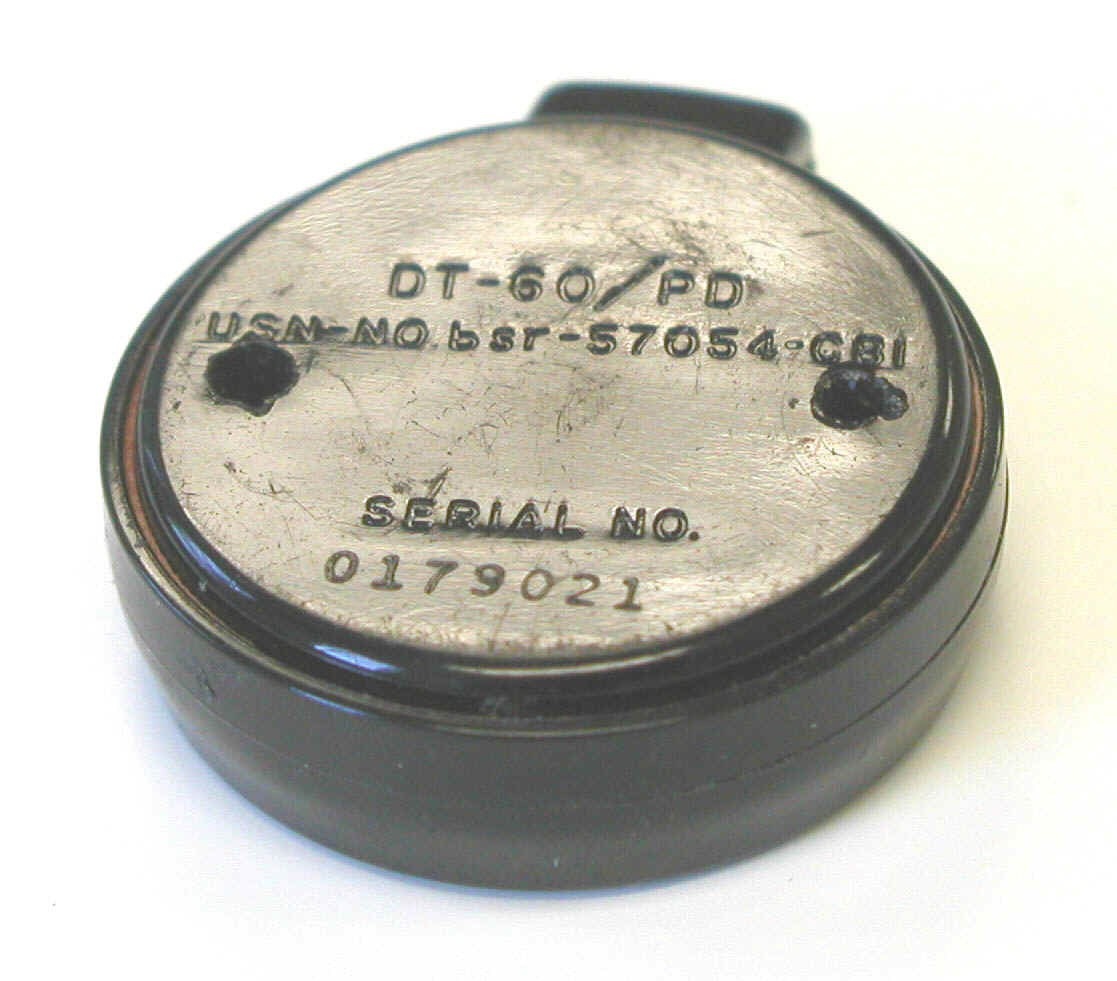
The DT-60/PD, generally called the "DT-60," is a high range military personnel (primarily Navy) dosimeter worn about the neck like a pendant. The "PD" of course, stands for personnel dosimeter. The circular black plastic container is designed to be difficult to open without a special tool.
The sensing element is a single 綌 x 綌 radiophotoluminescent glass block positioned in the center of the holder. To determine the dose, the glass block is removed from the holder and exposed to near ultraviolet radiation in a reader (e.g., the Radiac Computer-indicator CP-95). The result is that the glass emits light, the intensity of which is proportional to the radiation exposure. The reader measures the intensity of the emitted light and converts this into an exposure in roentgen.
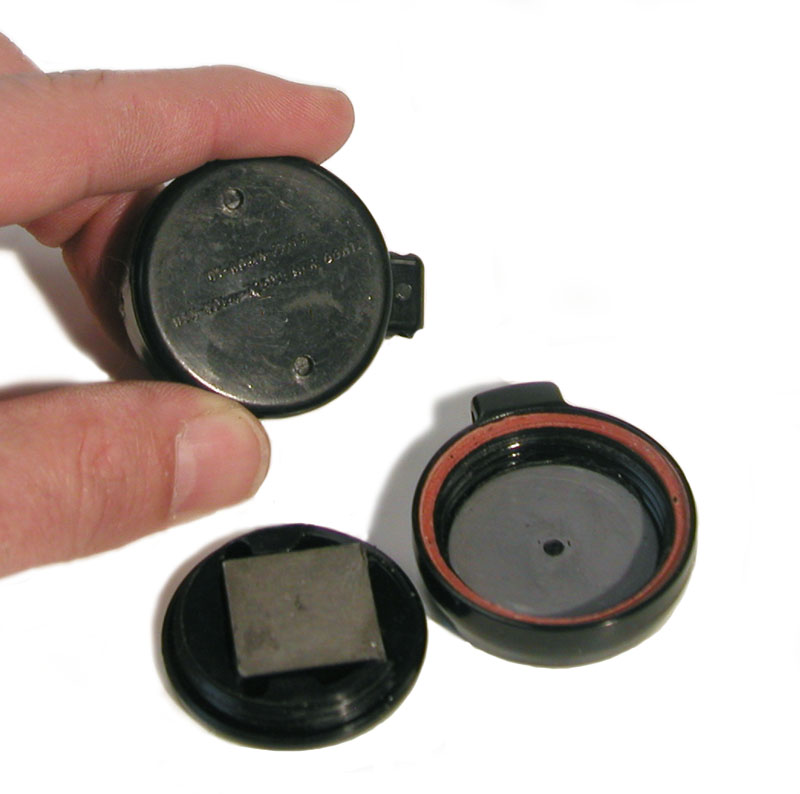
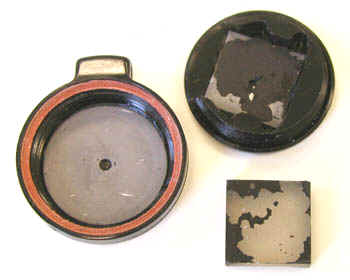
The above photographs show an open DT-60. The photograph to the right shows the phosphate glass block removed from the DT-60 case. Note the circular lead filter with the central pinhole for flattening the energy response.
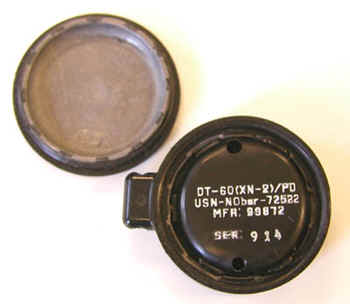
Sensing element: Silver-activated phosphate glass
Size: The case is 1.5" in diameter and 3/8" thick
Weight: 2 oz.
Dose range: Up to 600 R
Minimum detectable dose: 10 R
Energy range: 80 to 1,500 keV photons
Accuracy: 20%
Price: $1 in 1958; the DT-60B/PD was $2 in 1987 and the DT-60D/PD was $3
The photograph to the above right show an opened Model DT-60(XN-2). The XN designation probably indicates that it is an experimental version—it is not referred to in any of the RADIAC catalogs I have on file. It was sent to Harold Larson at PNL (Pacific Northwest Lab) around 1966 by Gene Tochilin of the US Naval Radiological Defense Laboratory.
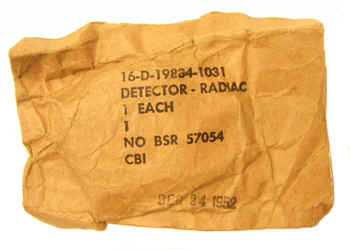
The photograph to the left shows a packet containing an extremely early DT-60. It came from the Sargo SSN-583 and is dated Dec 24, 1952!
The earliest reference that I have for this device is a U.P. press release from January of 1951. The relevant sections follow:
“Navy Develops Atom Detectors . . . Dog Tag Devices Test Radiation.”
“Silver-activated phosphate glass is the sensitive element in the second type [of dog tag device]. Gama [sic] rays turn the glass to an orange color under ultra-violet light. The navy said a quick measure of radiation intensity can be made visually and that a more accurate measurement can be determined by a simple and compact photo-electric “reader.”
Ten years later, in October of 1961, an AP press release featured a photo of a woman holding a DT-60 dosimeter. The accompanying text read: "Nuclear Neckwear. Linda Bromley of New Rochelle, N.Y., holds in her left hand a personal radiation detector whose maker says could be the next thing in ladies neckwear should the threat of nuclear fallout increase. The lead shield plastic-covered detector, called a dosimeter, is the size of a half dollar and weighs one and a half ounces."
The DT-60 was produced for the military by a variety of manufacturers: Bausch and Lomb Optical Co., Penberthy Instrument Co. Inc., Corning Glass Works, and Polaroid Corporation. The DT-60B/PD was manufactured by Speciality Electronics Corp. and the Model DT-60C was manufactured by Industrial Electronic Hardware Corp.
Donated by Ron Kathren and David Bullock.
References
- RADIAC data sheet.
- Department of the Navy Directory of Radiac Equipment NAVSHIPS 94200.5, page date April 1958.
- Defense Nuclear Agency List of Military and Civil Defense Radiac Devices HQDNA(AR)-124 3M, August 1987.
- Ron Kathren, personal communication.
